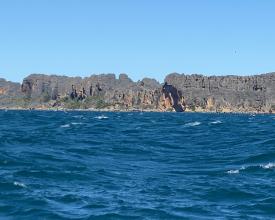Community of women committed to preserving the Nosy Hara marine protected area

Nosy Hara National Park is part of Madagascar's network of protected areas. A genetic reservoir of marine biodiversity, it is a sustainable fishing site par excellence, for the fishing community living around the park. Mangrove crabs, octopus and reef fish are the most commonly caught species. The Park is renowned for the production of octopus, fish for local, regional and even national consumption.
Overfishing in accessible areas by small-scale fishermen, the failure of nomadic fishermen to comply with fishing closures, and the lack of park staff for surveillance are among the daily challenges faced by park managers.
Co-management through the effective involvement of the local community in the preservation of the park is an approach adopted, particularly by the women's community of the village of Ankingameloka, who actively participate in the co-monitoring of mangroves, the restoration of the ecosystem and the monitoring of fishermen's daily catches.
Impacts
Thanks to the patrolling efforts of the local park committees, the mangroves in the Ankingameloka and Andranomavo areas have been preserved, ensuring the sustainability of their ecosystem services.
A better understanding by the community of the importance of conserving ecosystems and species through the results of the analysis of data collected by the women.
Maintenance of the ecological function of the mangrove forest and increase in surface area through restoration with Ceriops tagal, Rhyzophora mucronata and Bruguiera gymnorrhiza species .
Improved sources of income by diversifying the resources fished: fish, crabs, etc.
Mastering modern monitoring technology using smartphones for data collection.
Reduced anthropic pressure on the mangrove ecosystem
